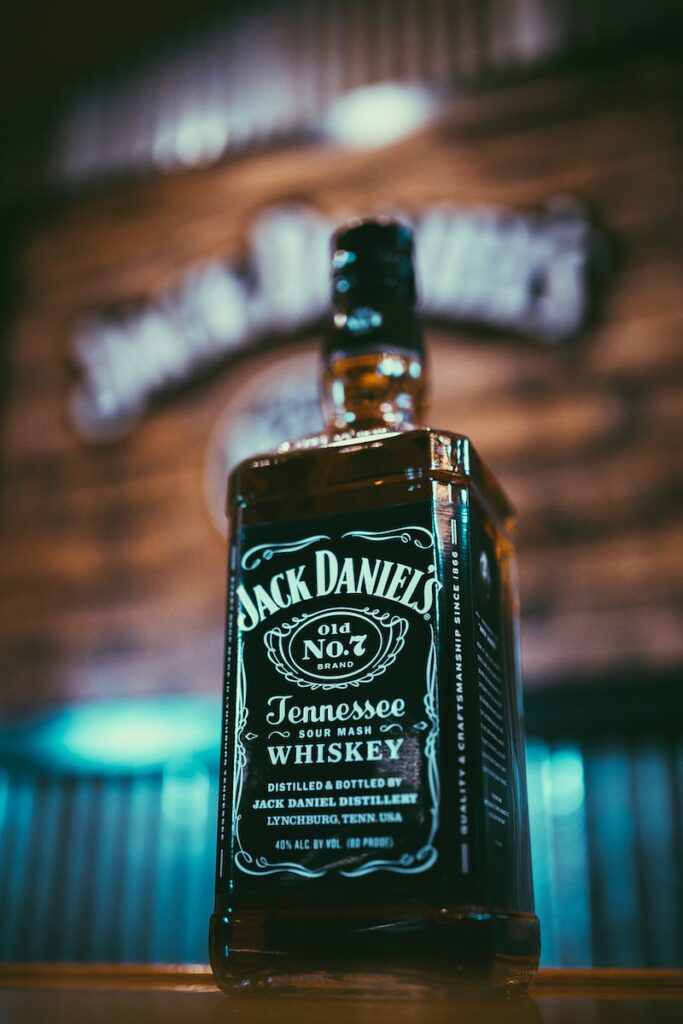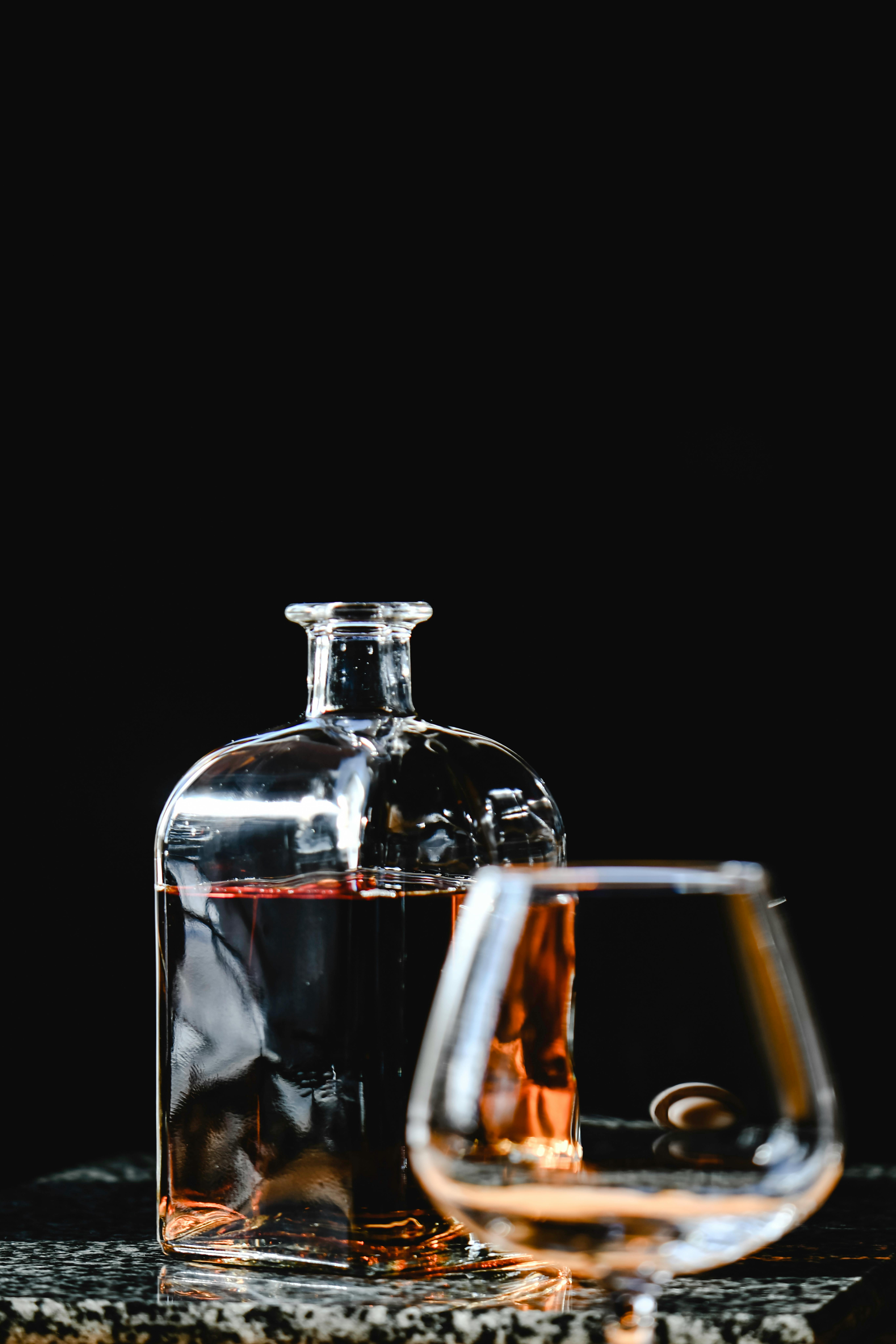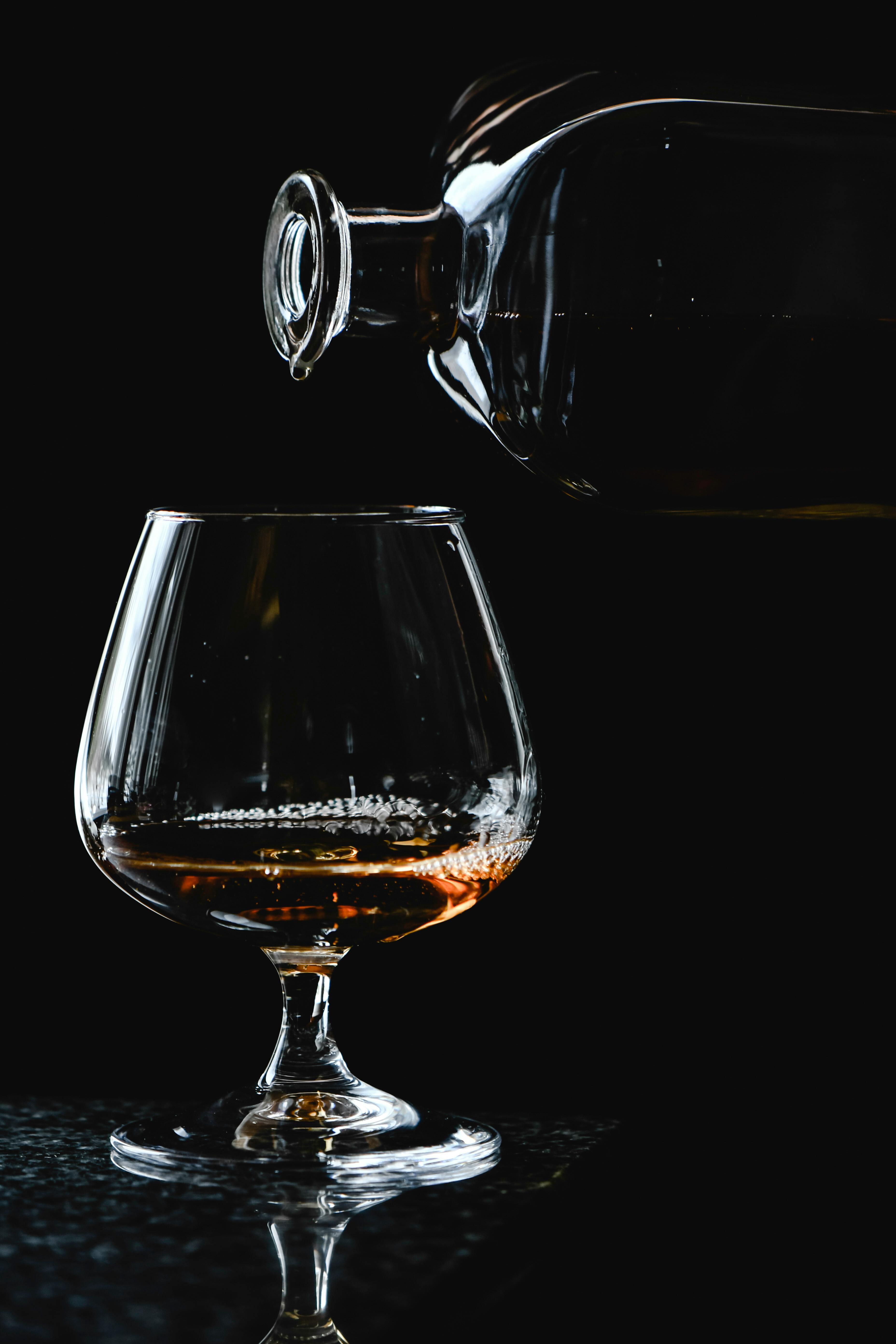Buckle up and prepare for a captivating journey as we delve into the world of bourbon craftsmanship. In this article, we take you on a fascinating exploration of the traditional distilling techniques that go into the creation of this beloved spirit. Get ready to unlock the secrets behind the craft of bourbon and discover the meticulous process that brings forth its distinctive flavors and rich heritage.

Table of Contents
The History of Bourbon
The Origins of Bourbon
Bourbon, the quintessential American spirit, has a rich and fascinating history that dates back to the late 18th century. Its roots can be traced back to the early American settlers who were experimenting with distilling spirits from various grains. While the exact origins of bourbon are still debated, it is widely believed that it emerged in the frontier region of Kentucky, fueled by the abundant supply of corn and natural limestone water.
The Evolution of The Craft Of Bourbon Production
Over the years, bourbon production has undergone significant evolution. Early distillers experimented with different grains, including corn, rye, and wheat, to create unique mash bills. The introduction of copper stills and the adoption of various distillation techniques further contributed to the refinement of the bourbon-making process. As the demand for bourbon grew, distilleries started implementing sophisticated aging techniques and barrel management practices, producing a spirit that would become synonymous with quality and craftsmanship.
The Role of Kentucky in Bourbon
Kentucky has undeniably played a pivotal role in the history and culture of bourbon. Its fertile soil, climate, and access to limestone-filtered water provide the ideal conditions for growing the grains used in bourbon production. The state’s early settlers cultivated vast cornfields, harnessing the natural resources of the land to produce spirits. It was in Kentucky that bourbon flourished, and the art of distilling truly began to take shape.
The Bourbon Trail
Today, bourbon enthusiasts and curious travelers can embark on an enchanting journey along the famous Bourbon Trail in Kentucky. This trail weaves through picturesque landscapes, encompassing historic distilleries and offering a glimpse into the captivating world of bourbon production. Visitors can witness the time-honored techniques, experience the unique flavors, and learn about the storied heritage that defines bourbon as an iconic American spirit.
The Distillation Process
Mashing
The distillation process begins with mashing, a crucial step in bourbon production. Mashing involves grinding grains, typically a combination of corn, rye, wheat, and malted barley, and mixing them with water to create a mash. The ratio of grains in the mash bill determines the flavor and character of the final product. Mashing activates enzymes in the malted barley, converting starches into fermentable sugars that will later be transformed into alcohol during fermentation.
Fermentation
Once the mash is prepared, it is transferred to fermentation vessels, often large stainless steel or wooden tanks. Yeast is added to the mash, kickstarting the fermentation process. Over the course of several days, yeast consumes the sugars present in the mash, producing alcohol and releasing carbon dioxide. Fermentation is a critical stage, as it contributes to the development of flavors and aromas that will be carried through to the final product.
Distillation
Following fermentation, the liquid undergoes distillation. Distillation is the process of separating alcohol from other components through heat and condensation. Traditional bourbon production typically employs either pot stills or column stills, each with its own distinct characteristics and advantages. Pot stills are renowned for producing rich and flavorful spirits, while column stills offer efficiency and consistency. The choice of stills plays a crucial role in shaping the desired flavor profile of the bourbon.
Maturation
After distillation, the new spirit is transferred into charred oak barrels for maturation. The aging process is a hallmark of bourbon production and imparts complex flavors and aromas. Bourbon must, by law, be aged for a minimum of two years in new charred oak barrels. However, many distilleries choose to age their bourbon for longer periods, allowing the spirit to develop deeper flavors and a smooth, well-rounded character. The aging process is greatly influenced by environmental factors such as temperature, humidity, and the specific location of the aging facilities.

Traditional Mash Bill Recipes
Corn Dominant Mash Bill
Corn is the cornerstone grain in bourbon production and is the primary ingredient in all mash bills. A corn dominant mash bill typically consists of at least 51% corn, contributing to the sweetness and mellow flavors characteristic of bourbon. The remaining portion of the mash bill usually includes a combination of rye, wheat, and malted barley, each adding its unique contribution to the overall flavor profile.
Rye Dominant Mash Bill
In a rye dominant mash bill, rye grain takes center stage, comprising more than 50% of the grains used. Rye whiskey enthusiasts often favor this mash bill for its distinct spicy and bold notes. Rye-dominant bourbons are known for their robust flavors and a touch of peppery complexity, setting them apart from corn or wheat dominated variations.
Wheat Dominant Mash Bill
Wheat, when used as the primary grain in a mash bill, produces bourbons that are notably smoother and softer on the palate. Popularized by prominent distilleries like Maker’s Mark, a wheat dominant mash bill often consists of more than 50% wheat. This choice imparts a delicate and gentle character to the bourbon, yielding flavors that can be described as subtle and slightly sweet.
High Rye Mash Bill
A high rye mash bill is designed for those who appreciate the spicier side of bourbon. This mash bill contains a significant proportion of rye grain, typically above 15%. High rye bourbons exhibit a pronounced peppery and bold character, with flavors that can range from spicy cinnamon to sharp black pepper. Distilleries known for their high rye mash bills include Four Roses and Bulleit.
Barrel Management and Aging
Selection of Barrels
Selecting the right barrels is a crucial aspect of bourbon production. Distilleries meticulously evaluate and choose new charred oak barrels that meet their specific criteria. The type of oak, level of char, and cooperage all influence the flavor profile and overall quality of the bourbon. These barrels are not only vessels for aging but also interact with the spirit, imparting captivating flavors derived from the wood’s natural compounds.
Char Level and Toasting Techniques
Charring the inside of the barrels is an integral part of the bourbon aging process. The level of char determines the degree of caramelization and adds depth of flavor to the bourbon. Distilleries often employ various toasting techniques and char levels to create their desired taste profiles. From lightly toasted to heavily charred, each approach contributes to the complexity and character of the final product.
Aging Facilities and Conditions
Bourbon aging takes place in carefully controlled environments within aging facilities known as rickhouses. These warehouses provide the ideal conditions for the bourbon to mature and develop flavor. Temperature variations, as well as the interaction of the spirit with the wood, play instrumental roles in the aging process. Bourbon barrels are traditionally stored on multiple levels within rickhouses, allowing for a unique flavor profile to be achieved by each barrel based on its specific location.
Effects of Aging on Flavor Profile
The aging process is instrumental in transforming bourbon from a raw spirit into a refined and sophisticated beverage. Over time, flavors from the charred oak barrels mingle with the bourbon, creating a harmonious marriage of sweet, fruity, spicy, and woody notes. The extraction of vanillin, tannins, and other compounds from the wood brings depth, complexity, and smoothness to the bourbon’s flavor profile. Each barrel develops its unique characteristics during aging, contributing to the diversity of flavors found in the final bottling.

The Importance of Water
Source and Quality of Water
Water, one of the fundamental ingredients in bourbon production, plays a vital role in ensuring the quality and consistency of the spirit. Distilleries carefully select the source of their water, often opting for natural limestone-filtered water, which possesses the necessary mineral content and purity. The quality of water used in various stages, such as mashing, fermentation, and dilution, can significantly impact the bourbon’s flavor and overall quality.
The Role of Water in Bourbon Production
Water is involved in several crucial stages of bourbon production. During mashing, water activates enzymes in the malted barley, facilitating the conversion of starches into fermentable sugars. In fermentation, water combines with the grain and yeast, allowing the conversion of sugars into alcohol. Additionally, water is used to dilute the bourbon before bottling, ensuring that the spirit reaches the desired proof.
Water in Distillation and Dilution
Water is also vital in the distillation process. In pot stills, water is circulated through condensers, cooling the vapor and condensing it into liquid form. This process is repeated multiple times to ensure the distillate undergoes thorough purification. During dilution, water softens the spirit, tempering its intensity and allowing the flavors to come to the forefront. The careful control of water at each stage contributes to the overall balance and quality of the bourbon.
Traditional Distilling Equipment
Pot Stills
Pot stills, often associated with small-batch production and artisanal craftsmanship, are often used in bourbon distillation. These traditional copper stills allow for a more hands-on and labor-intensive approach, resulting in spirits with rich and robust flavors. Pot stills retain more of the grain’s character, producing bourbons that are often complex, full-bodied, and full of depth.
Column Stills
Column stills, also known as continuous stills or patent stills, are renowned for their efficiency and ability to produce large quantities of spirits. These tall, towering structures utilize multiple plates or trays to separate the alcohol from impurities. Column still distillation, often employed in large-scale bourbon production, yields a cleaner and lighter spirit, prone to showcasing the delicate nuances of the mash bill.
Doubler and Thump Keg
In traditional bourbon distillation, the doubler and thump keg play significant roles in refining the spirit. The doubler, a large chamber positioned between the pot still and condenser, allows for further separation of impurities and concentrates the desirable flavors. Thump kegs, on the other hand, add depth and complexity to the spirit by recycling some of the vapors, creating a process known as reflux. These additional components contribute to the complexities and character of the final bourbon.
Condenser and Spirit Safe
The condenser, an essential component of the distillation process, plays a critical role in transforming vapor into liquid form. As the vapor rises through the still, it is cooled and condensed by the condenser, resulting in liquid distillate. The spirit safe is a safeguarding apparatus located between the condenser and the collection vessel. It allows the distiller to monitor and control the distillation process, ensuring that only the finest portion of the distillate is collected.

Master Distillers and Their Craft
The Role of Master Distillers
Master distillers are the creative minds behind the bourbon-making process. They are responsible for overseeing every step, from selecting the grains and crafting the mash bill to managing fermentation, distillation, and aging. Master distillers guide the entire production process, utilizing their expertise and experience to maintain the unique character and quality of the bourbon. They are the custodians of tradition and innovation, embodying the artistry and craftsmanship that defines the world of bourbon.
The Skills and Knowledge of Master Distillers
Master distillers possess a wealth of skills and knowledge accumulated over years of experience. They understand the delicate balance of ingredients and techniques required to create exceptional bourbon. From evaluating the quality of grains to honing their sensory analysis skills, master distillers have a deep understanding of the science and artistry involved in bourbon production. Their ability to navigate the complexities of distillation and aging contributes to the creation of remarkable spirits.
Famous Master Distillers in Bourbon History
Bourbon history is replete with legendary master distillers who have left an indelible mark on the industry. Icons such as Jimmy Russell, Parker Beam, and Fred Noe have dedicated their lives to perfecting the craft and passing down their knowledge to future generations. These trailblazers have pioneered new techniques and upheld time-honored traditions, shaping the bourbon landscape and creating legacies that continue to influence the industry today.
Modern Master Distillers
Today, a new generation of master distillers builds upon the foundation laid by their predecessors, infusing innovation and creativity into bourbon production. These modern master distillers push boundaries while paying homage to the rich heritage of the spirit. Their passion and dedication inspire the ongoing evolution of bourbon, ensuring its enduring legacy in the world of fine spirits.
Quality Control and Bottling
Meticulous Quality Control Processes
Quality control is of utmost importance in the production of bourbon. Distilleries implement rigorous processes to ensure that every batch meets their stringent standards. Quality control measures encompass every stage, from selecting the grains and monitoring fermentation to precise distillation and consistent aging. Tasting panels, laboratory analysis, and sensory evaluation are utilized to guarantee that every bottle of bourbon leaving the distillery meets the desired quality and flavor profile.
Bottling Techniques and Standards
Bourbon is meticulously bottled following strict standards and techniques. Each distillery has its specific process to ensure uniformity and precision in bottling. From filling the bottles with the correct volume of bourbon to applying labels and seals, attention to detail is paramount. Distilleries utilize automated systems and state-of-the-art technology to maintain efficiency and accuracy while upholding the integrity of the bourbon contained within.
Hand Bottling vs. Automated Systems
While automation has become increasingly prevalent in the bourbon industry, some distilleries still embrace the tradition of hand bottling. Hand bottling allows for a more personalized and artisanal touch, reinforcing the craftsmanship and human element in the process. However, the use of automated systems offers greater efficiency and consistency, especially for large-scale production. The choice between hand bottling and automation depends on the distillery’s philosophy and production capabilities.
Unique Bottling Features
Bourbon bottling goes beyond merely containing the spirit; it serves as a canvas for branding and storytelling. Distilleries often showcase their unique personality through distinctive packaging, labels, and bottle shapes. Some distilleries pay homage to their heritage by employing traditional bottle designs, while others embrace innovative and contemporary aesthetics. From minimalist elegance to ornate detailing, bourbon bottles capture the essence of the spirit and the distillery’s identity.
Bourbon Labels and Regulations
Requirements for Bourbon Classification
To be classified as bourbon, a spirit must adhere to certain legal requirements. The governing regulations dictate that bourbon must be produced in the United States, made from a grain mixture that is at least 51% corn, distilled to no more than 160 proof, entered into the barrel for aging at no more than 125 proof, and bottled at a minimum of 80 proof. These regulations are in place to ensure consistency and uphold the standards of bourbon production.
Labeling Laws and Guidelines
Labeling laws and guidelines further govern how bourbons are marketed and identified. Distilleries must adhere to strict regulations when providing information on their labels. These regulations specify what details must be included, such as the bourbon’s age, proof, and the distillery’s location. The accuracy and transparency of labeling help consumers make informed decisions and foster trust in the bourbon industry.
Bottled-in-Bond Act
The Bottled-in-Bond Act of 1897 was enacted to protect consumers and establish standards of quality assurance for bourbon and other spirits. The act stipulates that spirits labeled as “bottled-in-bond” must be the product of one distillation season, made by one distiller at a single distillery, aged for at least four years under government supervision, and bottled at 100 proof. This designation assures consumers of the spirit’s authenticity and adherence to strict regulations.
Other Bourbon Designations
In addition to the bottled-in-bond designation, bourbon may carry other special designations that highlight unique qualities or production methods. Single barrel bourbons are sourced from a single barrel, allowing for greater variations in flavor profiles. Small batch bourbons are produced by blending a limited number of barrels, often showcasing a distillery’s artistry and craftsmanship. These designations provide consumers with insights into the production methods and offer a diverse range of options within the bourbon category.
Bourbon Tasting and Evaluation
The Art of Bourbon Tasting
Bourbon tasting is a sensory exploration and a celebration of the craft. Evaluating bourbon involves engaging the senses of sight, smell, and taste to appreciate its complexity and character fully. Tasting allows one to discern the nuances of the bourbon’s aroma, identify its distinctive flavors, and appreciate its finish. It is an art form that requires patience, attention to detail, and a willingness to delve into the depth of flavors.
Evaluating Aroma, Flavor, and Finish
Aroma, flavor, and finish are the pillars of the tasting experience. The aroma of bourbon offers a preview of what lies within the glass, showcasing notes of caramel, vanilla, oak, or even fruits and spices. The flavor profile reveals the bourbon’s complexity, ranging from sweet and smooth to bold and spicy. The finish, the sensation that lingers after swallowing, allows the taster to reflect on the bourbon’s lingering character and aftertaste.
Tasting Techniques and Tools
Tasting bourbon requires utilizing proper techniques to fully appreciate its nuances. These include properly nosing the bourbon by swirling and inhaling its aromas, taking small sips to fully coat the palate, and savoring the flavors. Tasters may also employ tools such as tulip-shaped tasting glasses that concentrate aromas or a specialized whiskey tasting notebook to record their observations and impressions.
The Role of Sensory Analysis
Sensory analysis plays a critical role in evaluating bourbon quality and consistency. By employing the principles of sensory evaluation, tasting panels and experts can objectively assess various aspects of the bourbon, such as aroma intensity, flavor balance, and mouthfeel. Sensory analysis provides valuable insights into the development and refinement of bourbon, allowing for adjustments and improvements in production processes.
Now You Know The Craft Of Bourbon
In conclusion, the craft of bourbon is a journey into traditional distilling techniques that embody the heart and soul of America’s history and culture. From the origins of bourbon in Kentucky to the meticulous attention to detail in the distillation and aging processes, every aspect of bourbon production is carefully honed to create a spirit that captures the essence of its ingredients and the artistry of its distillers. Understanding the history, flavors, and craftsmanship behind bourbon enriches the experience of every sip, making it a truly remarkable and timeless American spirit.